- No products in the cart.
Table Trombomag n / v 75 + 15.2mg film 100 pcs
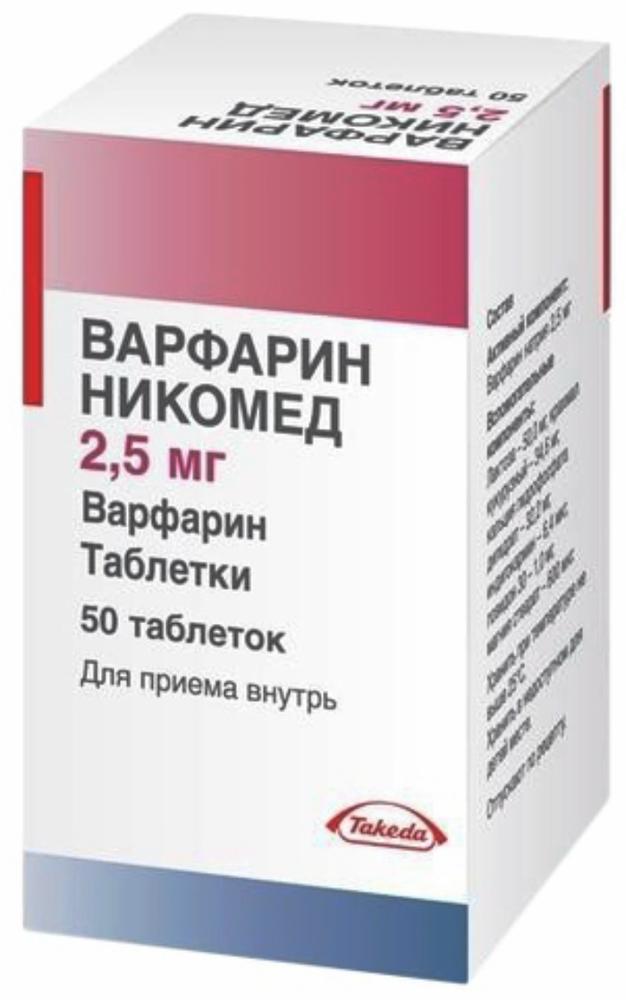
Nycomed Warfarin Valium 2.5 mg fl.plast 50 pc
$2.67
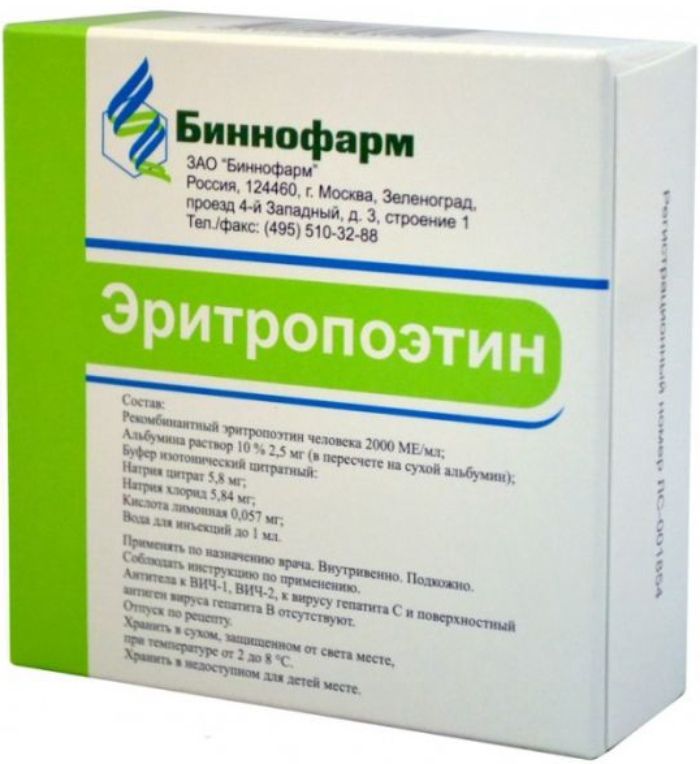
Erythropoietin solution and / I / / n / k 2000me / ml 1ml amp 10 pcs
$195.41
$7.14
Table Trombomag n / v 75 + 15.2mg film 100 pcs
SKU: 2001923632 Categories: Blood, Blood thinning, Medicaments Tags: acetylsalicylic acid + magnesium hydroxide, STADA
Description
Composition
Active substance:
1 tablet contains: 75 mg acetylsalicylic acid, magnesium hydroxide 15.20 mg ;.
Excipients:
Corn starch 9.50 mg or 19.00 mg; potato starch 2.00 mg or 4.00 mg; microcrystalline cellulose 9.07 mg or 18.15 mg; Citric acid 3.43 mg or 6.86 mg; magnesium stearate 0.15 mg or 0.30 mg; sheath: hypromellose 0.36 mg or 0.72 mg; macrogol 4000 0.07 mg or 0.14 mg; talc 0.22 mg or 0.44 mg.
Description:
antiplatelet agent
Round biconvex tablets covered with a foil cover of white color, scored on one side. Slight marbling. On the cross-section of the core is almost white.
Product form:
Tablets, film-coated, 75 mg 15.2 mg. 10 tablets in blisters of aluminum foil printed and lacquered aluminum foil laminated with PVC and polyamide film.
3 or 10 contour of cellular packaging together with instructions for use in a pile of cardboard.
Contraindications
Hypersensitivity to ASA any of the excipients of the drug, other non-steroidal anti-inflammatory drugs (NSAIDs); asthma induced by intake of salicylates and NSAIDs; combination of asthma, nasal polyposis, and paranasal sinuses and intolerance to ASA; erosive and ulcerative lesions of the gastrointestinal tract in the acute phase; gastrointestinal bleeding; bleeding in the brain; tendency to bleeding (thrombocytopenia, hemorrhagic diathesis, deficiency of vitamin K); severe renal impairment (creatinine clearance less than 30 mL / min); severe liver failure (more than 9 points on the Child-Pugh); pregnancy (I and III trimester); breastfeeding; deficiency of glucose-6-phosphate dehydrogenase; simultaneous use with methotrexate at a dose of 15 mg or more per week; Children up to age 18 years (effectiveness and safety has not been established).
Carefully
Gout, hyperuricemia; canker gastrointestinal or gastrointestinal bleeding history, renal failure mild and moderate severity (creatinine clearance of 30 ml / min) and / or liver failure (9 or less points of Child-Pugh), bronchial asthma, chronic respiratory diseases, hay fever, nasal polyposis, and paranasal sinuses, allergic reactions; period prior to surgery; simultaneous application of the following drugs: methotrexate at a dose less than 15 mg per week, valproic acid, anticoagulant, thrombolytic and antiplatelet agents, NSAIDs and derivatives of ASA in high doses, narcotic analgesics, sulfonamides (including co-trimoxazole..), inhibitors carbonic anhydrase (acetazolamide), digoxin, lithium, hypoglycemic agents for oral use (sulfonylurea derivatives), insulin, selective serotonin reuptake inhibitor, ibuprofen, systemic glucocorticosteroids; the combined use of ethanol (alcohol-containing products, beverages); II trimester of pregnancy.
Dosage
75 mg + 15.2 mg
Indications
Primary prevention of cardiovascular diseases such as thrombosis and congestive heart failure, with risk factors (e.g., diabetes, hyperlipidemia, hypertension, obesity, smoking, old age).
Preventing recurrent myocardial infarction and thrombosis of blood vessels.
Unstable angina.
Prevention of thromboembolic events after vascular surgery (e.g., coronary artery bypass, percutaneous transluminal coronary angioplasty).
Interaction with other drugs
Cm. also “Contraindications”, ”
Caution “,” Special Instructions ”
When the joint application of ASA enhances the effect and increases the risk of toxicity of methotrexate (by reducing renal clearance and displacement of the connection to plasma proteins) and valproic acid (at the expense of the displacement due to plasma proteins).
ASA enhances the effect and increases the risk of adverse reactions, narcotic analgesics, and other non-steroidal anti-inflammatory drugs (due to the synergistic action); hypoglycemic agents for oral use (sulfonylurea derivatives) and insulin (due to the hypoglycemic properties of the high-dose ASA (2 grams per day) and the displacement of sulfonylurea derivatives due to plasma proteins); thrombolytic agents, heparin, anticoagulants (including ticlopidine, warfarin), antiplatelet agents (including clopidogrel, dipyridamole) – owing to the synergy major therapeutic effects and displacement of the connection with plasma proteins; sulfonamides, incl co-trimoxazole – due to displacement from its association with plasma proteins and increase in the blood plasma concentration..; carbonic anhydrase inhibitors (acetazolamide). Joint application with ASA may lead to the development of severe acidosis and enhance the toxic effect on the central nervous system; digoxin and lithium – by reducing the renal excretion of digoxin and lithium with an increase in their concentration in the blood plasma; Selective serotonin reuptake inhibitors (including sertraline, paroxetine) – due to the synergy of action (to increase the risk of bleeding from the upper gastrointestinal tract). ethanol (alcohol and alcohol-containing medications) – with the strengthening of the damaging effect on the mucous membrane of the gastrointestinal tract and an increased risk of gastrointestinal bleeding.
Reduce antiplatelet effect ASA: ibuprofen (due to antagonism of platelet aggregation suppression); systemic glucocorticoids (reinforce elimination of salicylates); antacids containing magnesium and / or aluminum hydroxide, colestyramine (ACK reduce absorption in the gastrointestinal tract).
Low-dose ASA reduces the effect of uricosuric drugs (benzbromarone, probenecid, sulfinpyrazone) – due to competitive suppressing renal tubular excretion of uric acid.
ASA in high doses, like other NSAIDs, may reduce the antihypertensive effect of diuretics (due to reduction in glomerular filtration rate due to the suppression of prostaglandin synthesis kidney) and antihypertensives. In particular, due to the competitive blockade of the synthesis of prostacyclin may reduce the effectiveness of inhibitors of angiotensin converting enzyme (ACE).
Overdose
Early signs salicylates overdose (salitsilizm) include noise / tinnitus and develop in the blood plasma concentration of about 200 ug / ml. Severe toxic effects associated with concentrations of salicylates – 400 ug / ml.
Symptoms of an overdose of moderate severity: nausea, vomiting, tinnitus, hearing loss, dizziness, confusion.
Treatment: gastric lavage, repeated reception of activated carbon; symptomatic therapy.
Symptoms of severe degree of overdose: fever, hyperventilation, ketosis, respiratory alkalosis, severe hypoglycemia, cardiovascular and respiratory failure, coma.
Treatment: Immediately hospitalization in a specialized compartment for emergency treatment (gastric lavage, repeated reception of activated carbon, alkaline and alkaline forced diuresis, dialysis, restore water and electrolyte and acid-base status, symptomatic therapy). When conducting alkali diuresis necessary to achieve the pH of urine within 7.5-8.0. Forced diuresis alkali should be performed when the salicylate concentration in plasma is greater than 500 mg / l (3.6 mmol / l) in adults and 300 mg / l (2.2 mmol / l) in children. Overdose is especially dangerous in elderly patients.
pharmachologic effect
Pharmacodynamics:
The basis antiplatelet action mechanism of acetylsalicylic acid (ASA) is irreversible inhibition of the enzyme cyclooxygenase (COX-1), resulting in blocked synthesis of thromboxane A2 and platelet aggregation is suppressed. Antiplatelet effect is most pronounced in platelets, because they are not able to re-synthesize COX. It is believed that ASA has other mechanisms of platelet aggregation suppressant that expands the scope of its use in various vascular diseases. ASA also has anti-inflammatory, antipyretic and analgesic action.
Magnesium hydroxide – antacid; reduces the irritant effect of ASA on the gastric mucosa.
Pharmacokinetics:
Absorption. After oral administration ASA is rapidly and almost completely absorbed from the gastrointestinal tract. Meal slows absorption. Partially metabolized in the absorption time.
Distribution and metabolism. During and after absorption ASA converted to the major metabolite – salicylic acid, which is metabolized by the enzymes, mainly in the liver with metabolites (phenyl salicylate, and salicylate glucuronide salitsilurovaya acid), found in many tissues and body fluids. In women, the process of metabolism is slower (lower activity in serum enzymes).
The maximum concentration of ASA in the blood plasma achieved 10-20 minutes after ingestion, salicylic acid – after 0.3-2 hours. ASA and salicylic acid is highly bound to plasma proteins and rapidly distributed in the organism. salicylic acid degree of binding to plasma proteins is concentration dependent, non-linear. At low concentrations (400 ug / ml) – 75%. Bioavailability ASA is 50-68%, salicylic acid – 80-100%. Salicylic acid crosses the placental barrier, it is found in breast milk.
In renal failure, pregnancy and neonatal salicylates may displace bilirubin from its association with albumin, and promote the development of bilirubin encephalopathy.
Withdrawal. ASA and its metabolites are excreted mainly by the kidneys. The half-life of plasma ASA is 15-20 minutes, salicylic acid – 2-3 hours when receiving low-dose ASA and significantly increases when receiving ACK in high doses as a result of saturation of enzyme systems. Unlike other salicylates, taking the drug at multiple negidrolizirovannaya ACK does not accumulate in the serum. In patients with normal renal function 80-100% of a single dose of ASA excreted by the kidneys within 24-72 hours.
Magnesium hydroxide at the dosages do not affect the bioavailability of acetylsalicylic acid.
Pregnancy and breast-feeding
Pregnancy. The use of salicylates in doses of 300 mg / day for the first 3 months of pregnancy is associated with increased incidence of fetal defects (splitting upper palate, heart defects). Use of the drug TromboMag® I trimester of pregnancy is contraindicated.
During II trimester TromboMag® preparation can be used only after a rigorous assessment of treatment benefit ratio for the mother and the potential risk to the fetus, at doses higher than 150 mg / day, and short-lived.
In the III trimester salicylates (in a dose of 300 mg / day) cause inhibition of labor, premature closure of the ductus arteriosus in the fetus, increased bleeding in the mother and the fetus, and the application just before birth can cause intracranial hemorrhage, especially in premature infants. Use of the drug TromboMag® in the III trimester of pregnancy is contraindicated.
During breastfeeding. Salicylates and their metabolites in small amounts into breast milk. Clinical data for evaluation of safety of ASA during breastfeeding insufficient. Before the appointment of ASA during the period of lactation should evaluate the potential benefits of therapy with respect to the potential risk to the infant. Casual reception of salicylates during lactation is not accompanied by the development of adverse reactions in the child and does not require stopping breastfeeding. However, breast-feeding, if necessary TromboMag® prolonged use of the drug should be stopped immediately (see. The section “Contra ‘).
Conditions of supply of pharmacies
Without recipe.
side effects
In general TromboMag® preparation containing a low dose of ASA and magnesium hydroxide antacid well tolerated.
The frequency of side effects listed below was determined in accordance with the World Health Organization classification: very often – more than 10%; often – more than 1% and less than 10%; infrequently – more than 0.1% and less than 1%; rarely – more than 0.01% and less than 0.1%; very rarely – less than 0.01%, including isolated reports.
Central nervous system: often – headache, insomnia; rarely – dizziness, drowsiness; rarely – ringing in the ears, intracerebral hemorrhage.
From hemopoiesis system: very often – increased bleeding; rarely – anemia; very rarely – aplastic anemia, hypoprothrombinemia, thrombocytopenia, neutropenia, leukopenia, eosinophilia, agranulocytosis.
There are reports of hemolysis and hemolytic anemia in patients with severe glucose-6-phosphate dehydrogenase deficiency.
From respiratory system: often – bronchospasm.
From the digestive system: very often – heartburn; often – nausea, vomiting; rarely – pain in the abdomen, the mucous membrane of a stomach ulcer and duodenal ulcer, including perforated (rarely), gastrointestinal bleeding; rarely – increased activity of “hepatic” enzymes; very rarely – stomatitis, esophagitis, erosive lesions of the upper gastrointestinal tract (including with strictures), colitis, irritable bowel syndrome.
Allergic reactions: infrequently – urticaria, angioedema, rash, pruritus, rhinitis, swelling of the nasal mucosa; very rarely – anaphylactic shock, cardiorespiratory distress syndrome.
Other: rarely – renal dysfunction.
special instructions
TromboMag® drug should be used by a doctor.
ASA may provoke bronchospasm cause bronchial asthma and other hypersensitivity reactions (see. The sections “Contra”, ”
Carefully “). Have a history of asthma, hay fever, nasal polyposis, and paranasal sinuses, chronic respiratory diseases and allergic reactions to other drugs (e.g., skin reactions, pruritus, urticaria) are risk factors.
The inhibitory effect of ASA on platelet aggregation persists for several days after receiving that should be considered during and after surgery. A few days before the planned surgery should assess the risk of bleeding when compared with the risk of ischemic complications. With a significant risk of developing reception TromboMag® preparation is necessary to temporarily stop the bleeding (see. Section ”
Carefully “).
If the kidney function (creatinine clearance of 30 ml / min), as well as circulatory disorders arising from atherosclerosis, renal arteries, chronic heart failure, major surgery, sepsis cases, massive bleeding, caution, since in all these cases, ACK may increase the risk of developing acute renal failure / renal impairment (see. section ”
Carefully “).
It is known that the risk of developing acute renal failure is increased by concomitant use of other NSAIDs with diuretics or ACE inhibitors. It recommended monitoring renal function.
Patients with mild to moderate hepatic insufficiency should regularly monitor liver function (see. The section ”
Carefully “).
The combined use of methotrexate and ACK accompanied by an increased incidence of side effects of the blood, with the combined use of valproic acid – increased risk of its toxicity. During the first weeks of combined application of drug and TromboMag® methotrexate at a dose less than 15 mg per week to be a weekly blood test. Careful monitoring should be implemented in the presence of even small renal dysfunction, as well as in elderly patients (see. Sections “Contraindications”, ”
With caution “,” Interaction with other drugs “).
The combined use of ASA with an anticoagulant, thrombolytic and antiplatelet drugs is associated with an increased risk of bleeding and damaging effect on the mucous membrane of the gastrointestinal tract (see. Forums ”
With caution “,” Interaction with other drugs “). It is necessary to control the bleeding time.
Not recommended TromboMag® combined application of drug and ibuprofen in patients with an increased risk of cardiovascular disease because reduction antiplatelet action ASA in doses up to 300 mg reduces the cardioprotective effects. Patients taking ibuprofen for pain relief, you should inform the doctor (see. Forums ”
With caution “,” Interaction with other drugs “).
We recommend monitoring the concentration of digoxin and lithium in the blood plasma at the beginning or at the end of the joint use drug TromboMag®; may require dose adjustment (see. section ”
With caution “,” Interaction with other drugs “).
In joint use of systemic glucocorticosteroids (GCS) and ASA concentration of salicylate in blood plasma is lowered, and after withdrawal of systemic corticosteroids possible overdose of salicylates. Moreover, in the combined use increases the risk of damaging the mucosa of the gastrointestinal tract and bleeding (see. The sections ”
With caution “,” Interaction with other drugs “).
При совместном применении АСК с диуретиками и гипотензивными средствами (например, ингибиторы АПФ) следует учитывать возможное снижение их эффективности (см. раздел «Взаимодействие с другими лекарственными средствами»).
Приём АСК в дозах, превышающих рекомендуемые терапевтические (пациентами любого возраста), или длительный приём АСК в низких дозах (пациентами пожилого возраста) сопряжены с повышением риска желудочно-кишечного кровотечения. При длительном применении препарата ТромбоМаг® следует периодически контролировать общий анализ крови и анализ кала на скрытую кровь, а также функциональное состояние печени.
АСК в низких дозах снижает экскрецию мочевой кислоты и может спровоцировать развитие подагры у предрасположенных пациентов, имеющих пониженную экскрецию мочевой кислоты (см. раздел «
С осторожностью », «Взаимодействие с другими лекарственными средствами»).
АСК в высоких дозах оказывает гипогликемическое действие, что следует учитывать у пациентов с сахарным диабетом, получающих гипогликемические средства для приёма внутрь или инсулин (см. раздел «
С осторожностью », «Взаимодействие с другими лекарственными средствами»).
При тяжёлых формах дефицита глюкозо-6-фосфатдегидрогеназы АСК может вызвать гемолиз и гемолитическую анемию (см. раздел «Противопоказания»). Факторы, повышающие риск развития гемолиза и гемолитической анемии — лихорадка, острые инфекции и высокие дозы АСК.
Effects on ability to drive vehicles and operate machinery
В период лечения препаратом ТромбоМаг® необходимо соблюдать осторожность при управлении транспортными средствами и выполнении видов деятельности, требующих повышенной концентрации внимания и быстроты психомоторных реакций.
Storage conditions
Хранить в защищенном от влаги и света месте при температуре не выше 25°С.
Keep out of the reach of children!.
Dosing and Administration
Внутрь, через 1-2 часа после еды, 1 раз в сутки.
Таблетку препарата ТромбоМаг® проглатывают целиком (можно разжевать или измельчить), запивают водой.
Препарат ТромбоМаг® предназначен для длительного применения. Duration of treatment is determined by the doctor.
Первичная профилактика сердечно-сосудистых заболеваний, таких как тромбоз и острая сердечная недостаточность, при наличии факторов риска (например, сахарный диабет, гиперлипидемия, артериальная гипертензия, ожирение, курение, пожилой возраст)
В первые сутки-1 таблетка препарата ТромбоМаг®, содержащая 150 мг ацетилсалициловой кислоты, затем по 1 таблетке препарата ТромбоМаг®, содержащей 75 мг ацетилсалициловой кислоты.
Профилактика повторного инфаркта миокарда и тромбоза кровеносных сосудов 1 таблетка препарата ТромбоМаг®, содержащая 75 мг или 150 мг ацетилсалициловой кислоты.
Нестабильная стенокардия 1 таблетка препарата ТромбоМаг®, содержащая 75 мг или 150 мг ацетилсалициловой кислоты.
Профилактика тромбоэмболии после хирургического вмешательства на сосудах (например, аортокоронарное шунтирование, чрескожная транслюминальная коронарная ангиопластика) 1 таблетка препарата ТромбоМаг®, содержащая 75 мг или 150 мг ацетилсалициловой кислоты.
При пропуске одной или нескольких доз препарата ТромбоМаг® необходимо принять пропущенную дозу препарата сразу, как только пациент вспомнит об этом. Во избежание удвоения дозы не следует принимать пропущенную таблетку, если приближается время приёма очередной дозы.
Особенности действия при первом приёме или отмене препарата не наблюдались.
Information
Appearance may differ from that depicted in the picture. There are contraindications. You need to read the manual or consult with a specialist
Additional information
| Weight | 0.100 kg |
|---|---|
| Manufacturer | STADA |

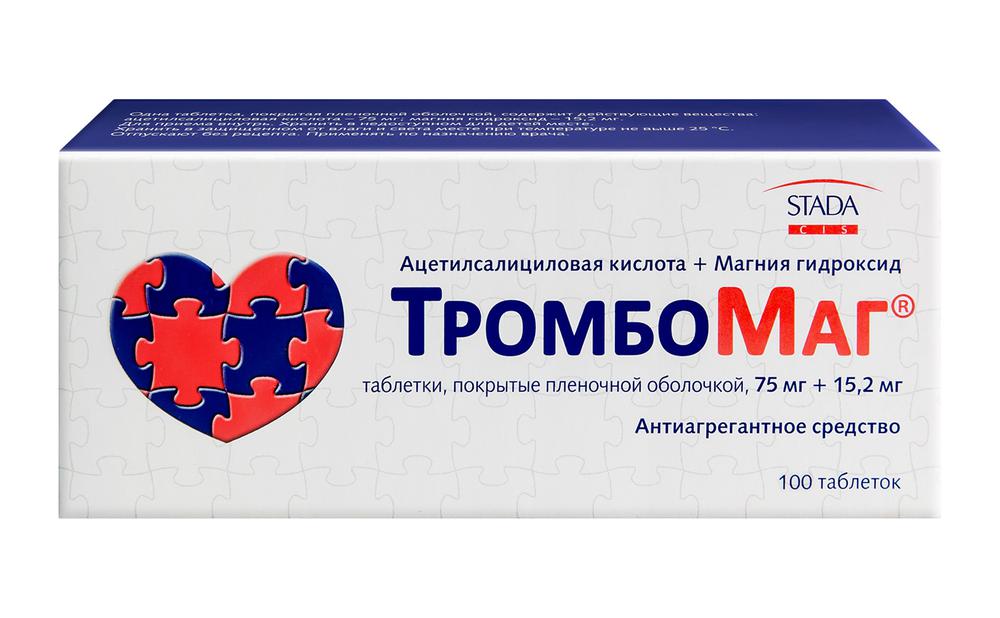


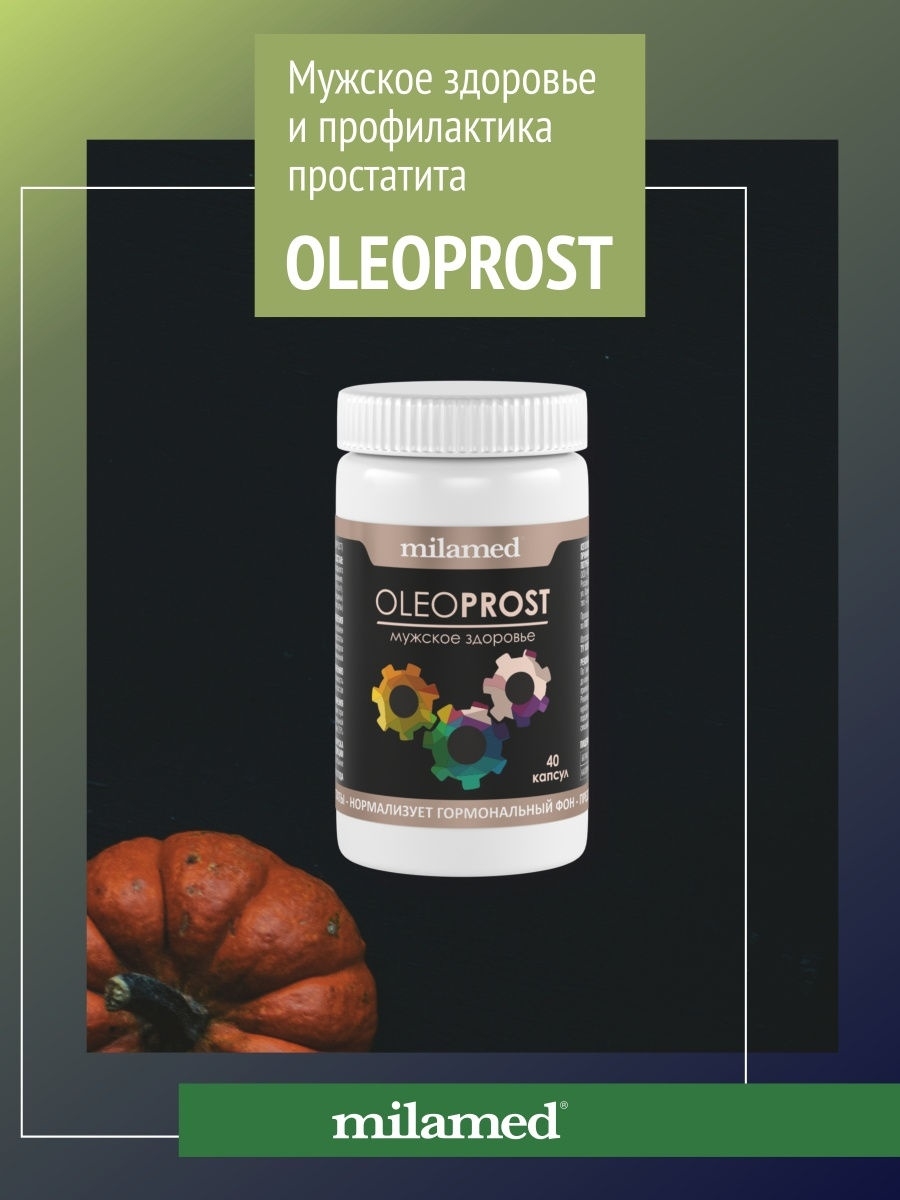

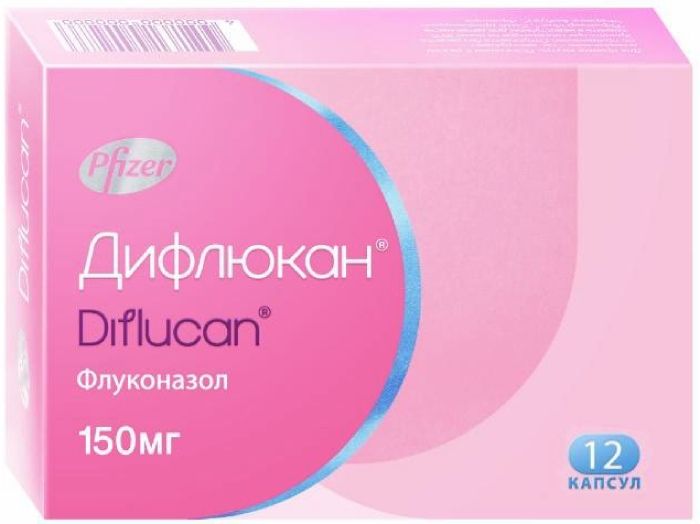
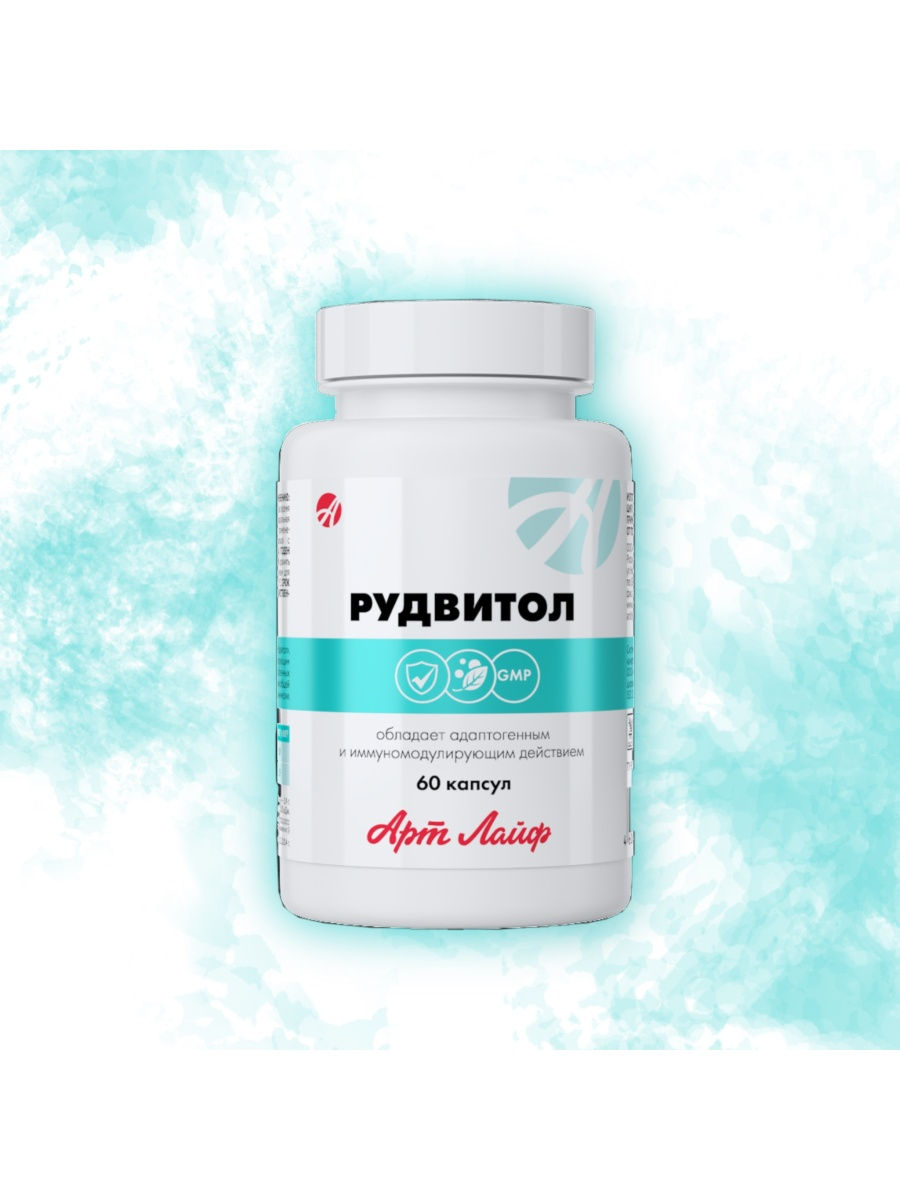



There are no reviews yet.